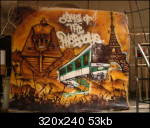The Langmuir Lectureship is co-sponsored by the ACS Division of Colloid & Surface Chemistry and the journal Langmuir.
Prashant V. Kamat
2013 ACS Langmuir Lecturer
Nicholas A. Kotov
2013 ACS Langmuir Lecturer
Nicholas A. Kotov
2013 ACS Langmuir Lecturer
2013 ACS Langmuir Lecturer
Prof. Nicholas A. Kotov graduated from Moscow State University where he started working on biomimetic interfaces for solar energy conversion. He is currently the Joseph and Florence Cejka Professor of Engineering at University of Michigan. Prof. Kotov serves as an Associate Editor for ACS Nano, and as a member of Advisory Boards of several nanotechnology journals.
The focus of his current research projects is self-organization of nanoparticles into complex biomimetic systems – chains, sheets, helices, and others. Such assemblies enable integration with microscale technologies and energy-conservative production of biosensing, energy conversion, and electronic devices as well as protection coatings and catalysts. His ongoing research projects also include advanced composites made by the layer-by-layer (LBL) assembly that represent another example of biomimetic nanoscale materials. Mechanical properties of LBL multilayers from nanoparticle of clay and other materials replicating those of nacre as the unique natural composite material were at the onset of his studies in this area. Ultrastrong composites produced in his lab are currently being tested for structural, automotive, and aviation applications.
The focus of his current research projects is self-organization of nanoparticles into complex biomimetic systems – chains, sheets, helices, and others. Such assemblies enable integration with microscale technologies and energy-conservative production of biosensing, energy conversion, and electronic devices as well as protection coatings and catalysts. His ongoing research projects also include advanced composites made by the layer-by-layer (LBL) assembly that represent another example of biomimetic nanoscale materials. Mechanical properties of LBL multilayers from nanoparticle of clay and other materials replicating those of nacre as the unique natural composite material were at the onset of his studies in this area. Ultrastrong composites produced in his lab are currently being tested for structural, automotive, and aviation applications.
Prashant V. Kamat
2013 ACS Langmuir Lecturer
2013 ACS Langmuir Lecturer
Professor Prashant V. Kamat earned his doctoral degree in Physical Chemistry from the Bombay University, and carried out postdoctoral research at Boston University and the University of Texas at Austin. He is currently the Zahm Professor of Science in the Department of Chemistry & Biochemistry and Radiation Laboratory at the University of Notre Dame. Prof. Kamat serves as Deputy Editor of theJournal of Physical Chemistry Letters. He is a Fellow of the American Chemical Society, the AAAS, the Electrochemical Society, and the Japan Society for Promotion of Science.
For the past 25 years Prof. Kamat has been conducting DOE-BES supported research in the areas of photochemistry and photoelectrochemistry of semiconductor nanostructures and organic-inorganic hybrid assemblies at Notre Dame. His current research efforts are mainly focused on harvesting light energy using semiconductor nanocrystals, metal nanostructures, and carbon nanostructures as building blocks.









